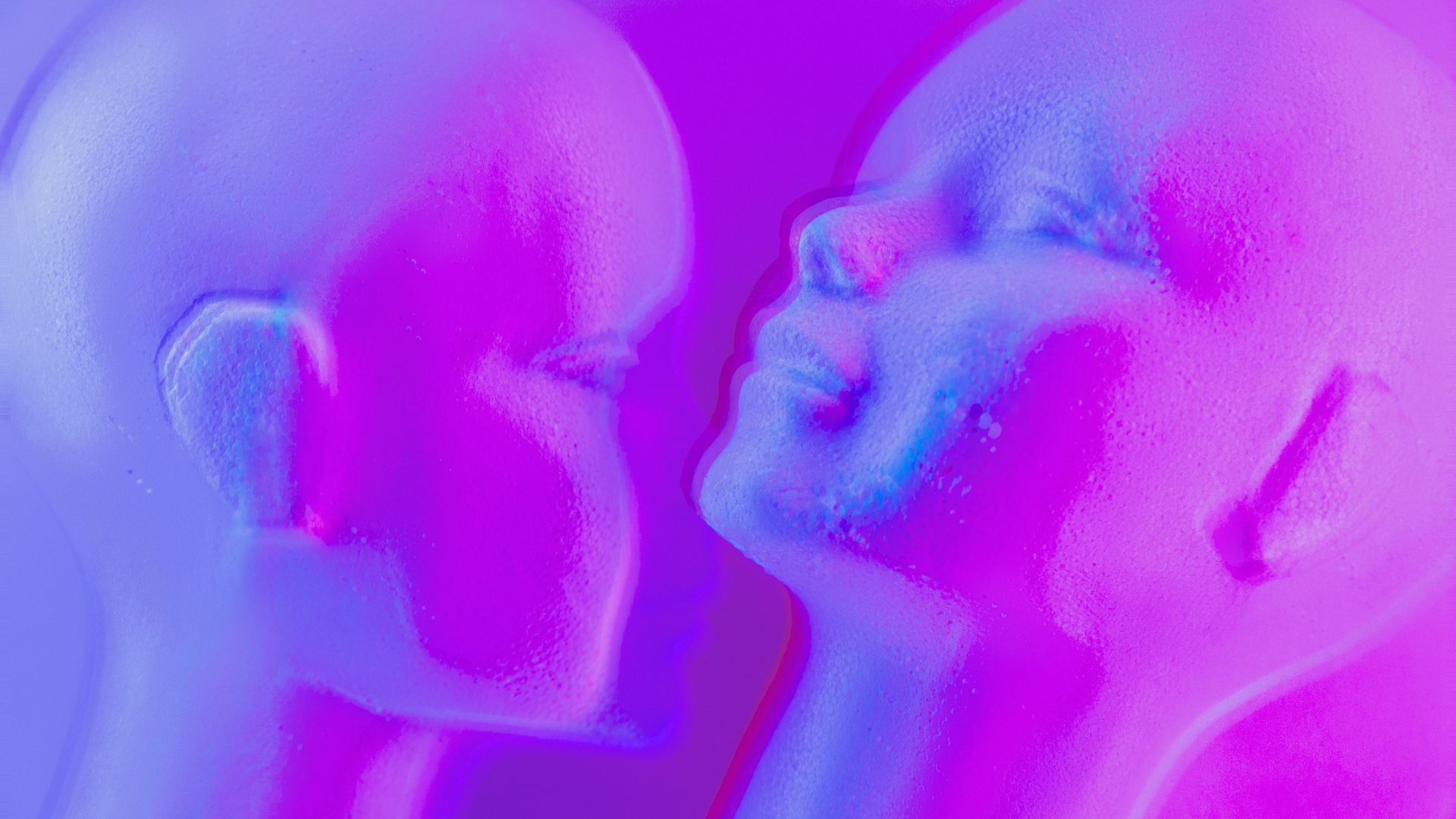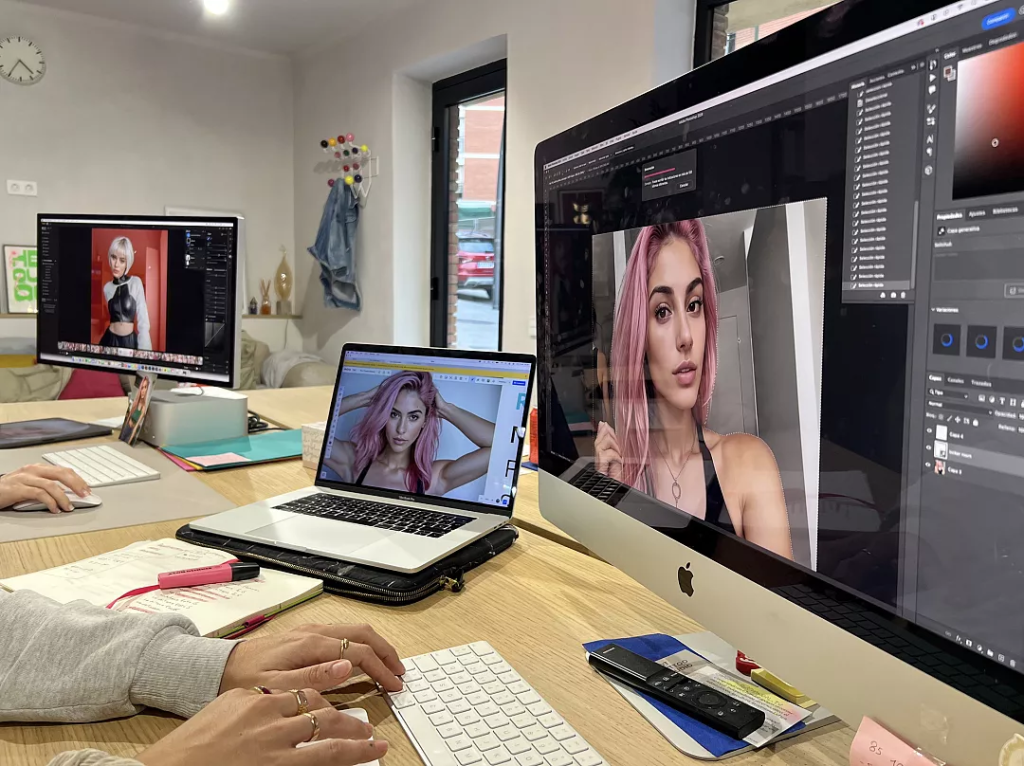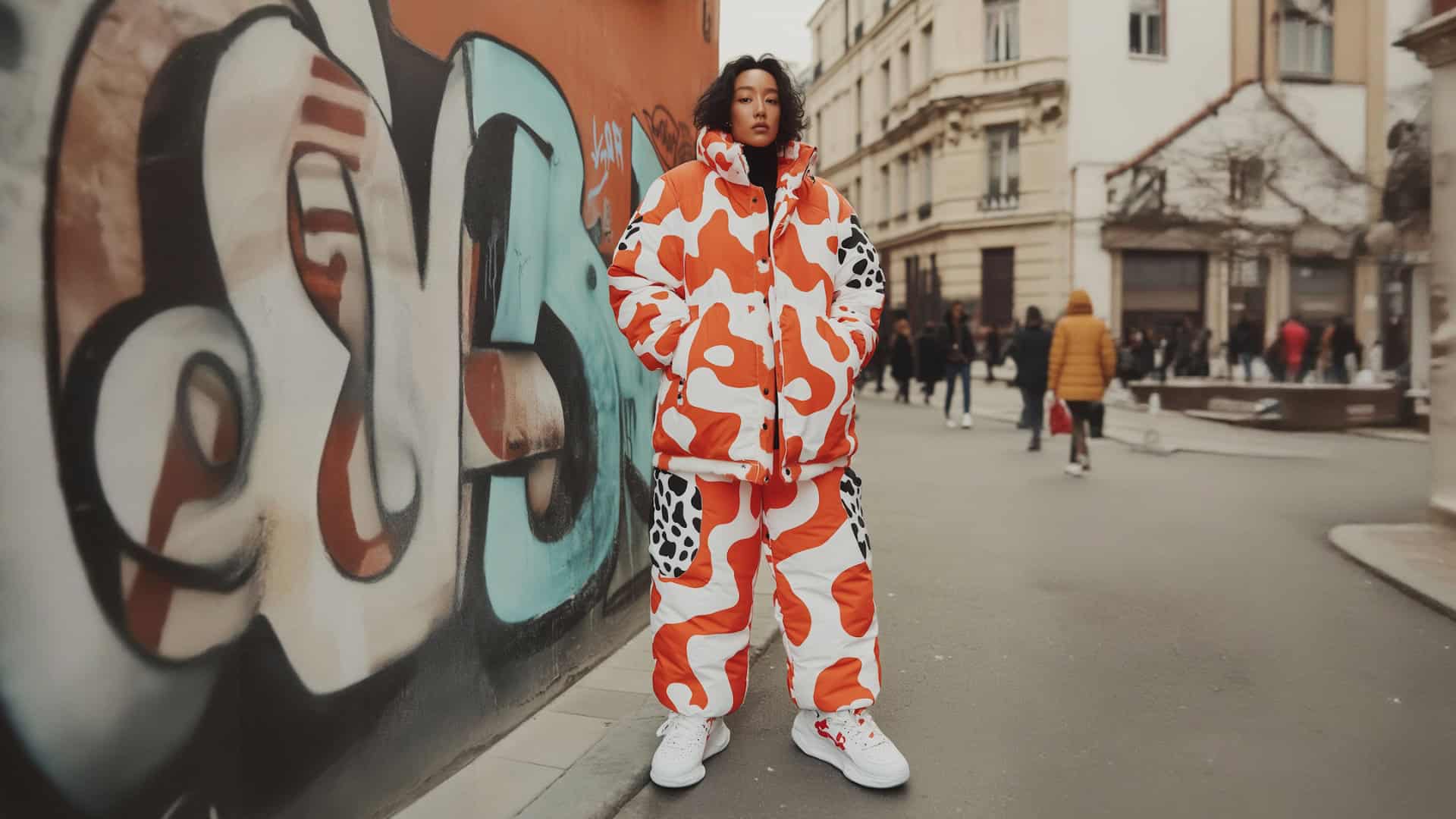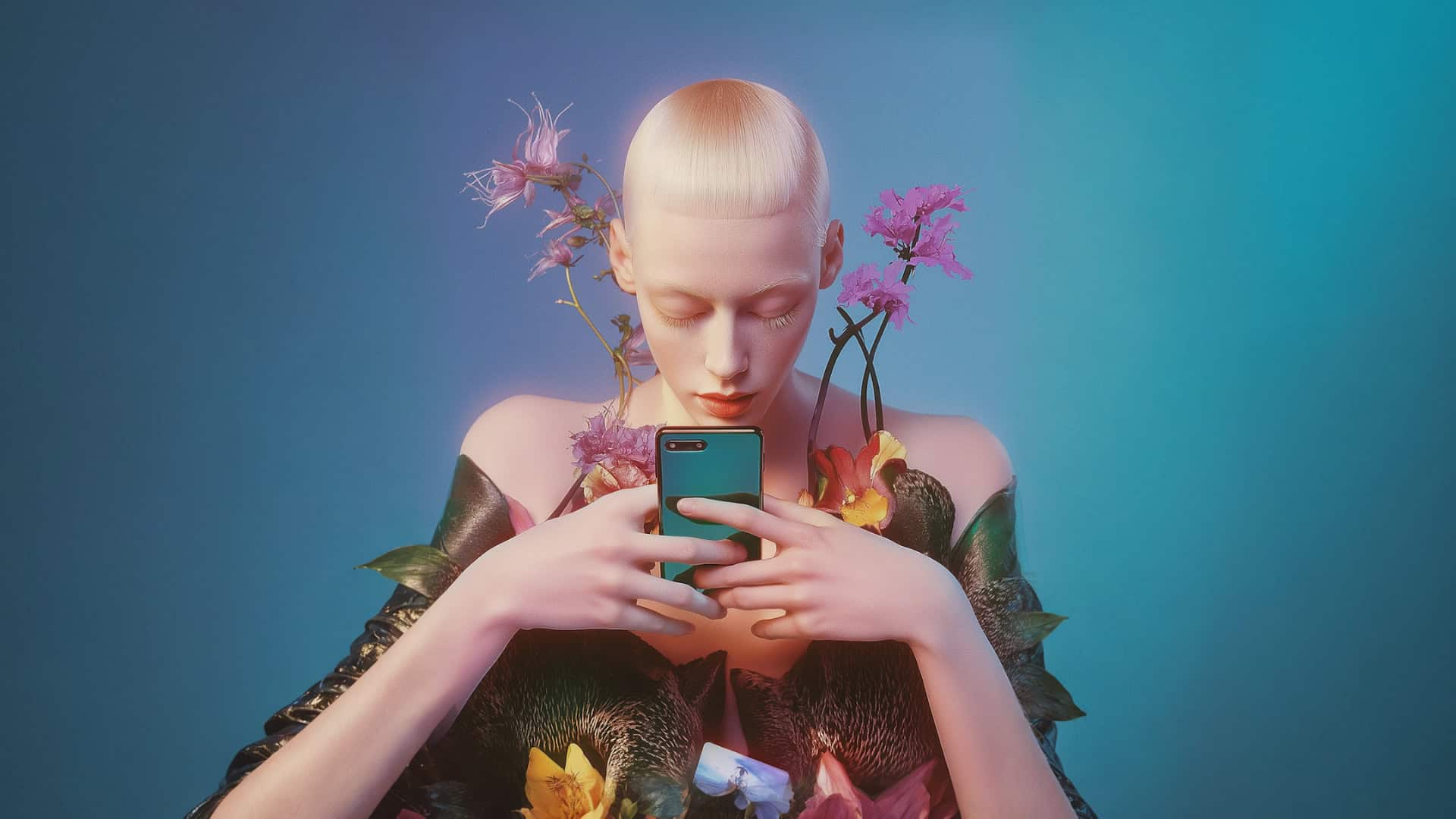
AI Influencers: The Real Deal?
Artificial intelligence has been consistently making waves in the marketing world - and the influencer sector certainly hasn’t escaped the AI revolution.
You’ve most likely heard about some of the (seedier) scandals involving AI models, virtual adult content creators, sinister deepfakes, and bogus product promotions. And if you haven’t, don’t worry - we’ve already written an entire article about it.
Well, AI influencers are no longer just cheap tricks or potential scams. They’ve officially hit the mainstream, with virtual influencers like Lil Miquela and Laila Khadraa striking up legitimate brand partnerships with the likes of Prada, Puma, and Samsung. There’s a growing business interest in AI-generated influencer campaigns, and it feels like this new sub-sector of the influencer world is gaining momentum. With the introduction of the first AI actress, Tilly Norwood, in Hollywood, there is no knowing how far this technology will go; despite pushback from those in the industry
Far from being a niche or novelty, these virtual creators are taking on incredible lucrative brand deals and reaching millions of people worldwide. While their avatars may be artificial, their impact is anything but.
So what does this all mean for real, human influencers? Is there still a role for creators who aren’t made of pixels, or is the 2025 AI takeover inevitable?

What is an AI influencer?
AI influencers (also known as virtual influencers) are computer-generated avatars that play a similar role to human influencers. They promote brands, sell products, and connect with audiences online.
Apart from being a shiny new use of AI technology, virtual influencers do offer some interesting benefits for marketers - according to Influencer Marketing Hub, 50% of those who have worked with virtual influencers found the experience to be ‘very positive’.
Characteristics of AI Influencers
- Virtual nature: They exist purely online—created through technology rather than reality.
- Personality: Each is built with a defined character, story, and set of values to connect with audiences on a human level.
- Consistency: Their digital design allows flawless branding and control, free from the unpredictability or fatigue that can affect human creators.
Why have AI influencers taken off?
So what is so appealing about an AI influencer for digital advertisers?
They're cost-efficient - and easy to scale
Since virtual influencers are generated by a computer, they’re not particularly fussy about payment. They don’t negotiate travel expenses or contract terms, and more importantly, they can rapidly produce content at scale - in multiple languages.
While there may be some costs associated with developing a new avatar (or partnering with an existing AI influencer) it’s likely to be cheaper - and this can be an appealing proposition for cost-conscious brands.
Brands have total control over creative messaging
Brands have complete control over what a virtual influencer says and does.
For example, artificial intelligence Instagram influencers won’t need to adjust a creative message to be more on-brand. Brands don’t need to explain product benefits or technical specifications to them, and they don’t need multiple content amendment rounds.
Marketers can avoid controversy and apply more control
When you’re working with a robot, it’s very difficult to get your brand into hot water. Marketers can dictate exactly what an AI influencer says, controlling everything from brand guidelines to specific language.
There’s no room for unexpected comments or influencer misinterpretations, which might be a big selling point for more cautious advertisers.
Do AI influencers make money? Are these virtual brand ambassadors actually effective?
The jury is still out on this one. While some evidence suggests that AI influencers can drive up to 3% more engagement on platforms like Instagram, other statistics say otherwise.
For instance, data from CreatorIQ states that many AI influencers utilised by global brands just aren’t delivering the same levels of engagement as their human counterparts.
Lil Miquela, a prominent AI influencer mentioned earlier in this blog, posted 7 pieces of content for BMW in 2023. These posts averaged a 0.6% engagement rate - compared to the 3.6% engagement rate achieved by human creators for BMW. In a similar story, Aitana Lopez (a Spanish AI model) has posted for clients like Nike, Fortnite, and Patagonia, delivering an average engagement rate of 2.9% - 1.03% below usual creator benchmarks for these brands.
Now, this isn’t to say that virtual influencers are totally ineffective. In some instances, they can certainly outperform human creators, and there are some respectable engagement rates delivered. But it feels like they’re not quite cutting the social media mustard.
So while these virtual influencers are making headlines, they’re not outperforming their real-life equivalents. Which begs the question - why?

The case for humanity in influencer marketing
Virtual influencers have plenty of similarities with real creators. They’re pictured with different products, they post lifestyle content, and they even respond to comments from their followers.
(Some of which are quite weird, but that’s a topic for another blog post.)
However, they lack the fundamental feature that makes influencer magic. A human personality.
When you really drill down to the core, AI influencers are essentially just virtual billboards, playing the pre-determined brand messages they’ve been programmed to deliver. They can’t reminisce about a recent holiday, excitedly unbox a new product, or express their true thoughts/feelings on a brand.
Now, I’m about to drop a serious buzzword, but it’s relevant. At its very best, influencer marketing is all about authenticity. Businesses partner with creators who can act as effective brand ambassadors because they actually use and enjoy their products. As humans, we can tell when someone is genuinely advocating for a product or service, and when they are, it can immediately shape our buying behaviours.
Virtual influencers, at best, can only imitate what a real influencer does. And personally, I don’t think that’s going to be enough in the long run.
Reflecting on the value of human creators
While I don’t believe virtual influencers can truly dominate the industry, they have given me the opportunity to reflect on why we connect so naturally with human influencers.
Real creators aren’t always perfect, but that’s what makes them so accessible and relatable.
My prediction? 2025 isn’t going to see the influencer world captured by AI creators and their questionable comment sections.
(Seriously, go and look if you don’t believe me.)
In fact, the role of human influencers in marketing is only going to become more crucial in a world grappling with deepfakes, AI-fuelled controversies, and rampant misinformation. Influencers won’t just be viewed as content creators or marketing assets - when used correctly, they’ll provide brands with a real, trustworthy, human face, and provide customers with real, trustworthy, human opinions.
*BUT, before I’m accused of being an AI-hating stick in the mud, I want to emphasise that there are plenty of other ways for artificial intelligence to enhance influencer marketing in 2025. In fact, AI influencers are probably one of the least exciting prospects here.
Instead, AI should be used to analyse online audience behaviours, understand the nuances behind high-performing content, and optimise influencer performance.
The bad news is that there’s a 0% chance of me being able to explain the finer details of AI potential for influencer marketing. The good news is that I don’t have to, because our resident AI genius James Wolman (from our sister agency Braidr) has given this brilliant synopsis:
“Everyone's worried about AI creating fake influencers, but that's missing the point. The real power of AI in 2025 won't be about replacing humans - it'll be about finally understanding what makes content actually connect with people. With LLMs/agentic AI now able to independently analyse and act on audience behavior patterns, creators will have smart assistants that can actually help shape their content strategy in real-time. We're moving past basic follower counts to seeing why some creators build genuine communities while others don't. That's the game-changer.”
So there you have it. Strike the delicate balance between relatable human influencers and AI-fuelled data analytics, and you’ll be golden in 2025.
We see incredible results with our clients because we place a strong emphasis on identifying the right influencers to connect with high-value audiences, influence real behaviours, and convert at scale. If you’re keen to leverage the full potential of human influencers in 2025, don’t hesitate to reach out for a chat!







